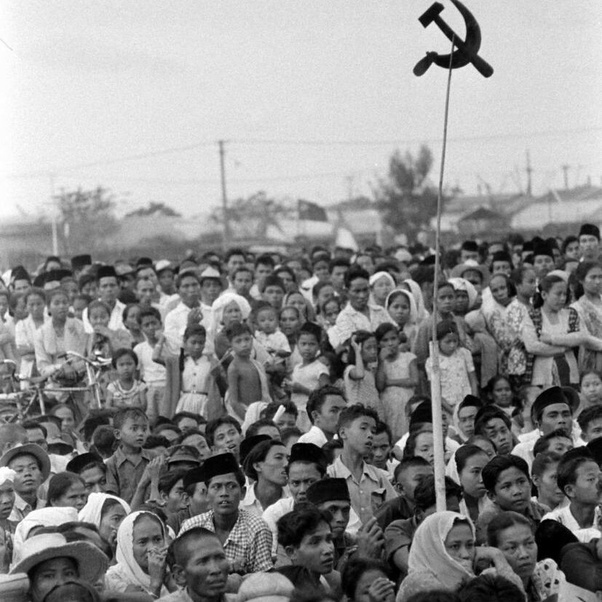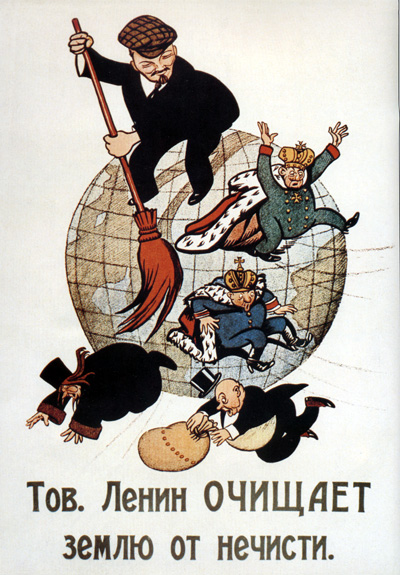On this day in 1965, the September 30th Movement assassinated six Indonesian Generals, beginning a period of West-backed mass murder of alleged communists, religious minorities, and ethnic Chinese people. At least 500,000 were killed.
The assassinations were blamed on the Communist Party on Indonesia (KPI) by the army and various civic and religious groups, and the resulting campaign of mass murder and arrests, backed by several Western powers, led to the ousting of Indonesian nationalist President Sukarno, the deaths of anywhere from 500,000 to 3 million people, and the installation of Suharto, a brazenly corrupt anti-communist, as President.
Blaming the KPI for the assassination of the generals, Suharto's forces began purging insitutions of alleged Sukarno and PKI loyalists, arresting and summarily executing many important PKI figures. As leftists, real or alleged, were violently removed from civil and military institutions, reactionaries began directing violence towards ordinary civilians.
The campaign of repression was both widespread and brutal; victims were tortured, impaled, beheaded, and rivers were left congested with masses of corpses. The most conservative estimates suggest 500,000 people were killed in total, while higher estimates range from 2-3 million.
Western powers, including the U.S., Britain, Australia, and Sweden, both supported and directly aided the anti-communist pogroms. In 1962, three years before the killings began, both the U.S. and British governments that it would be necessary "to liquidate Sukarno".
The U.S. trained more than 1,200 anti-communist military officers, providing them weapons and economic assistance. During the massacres, the U.S. supported the Indonesian military's actions, even providing the government with lists of suspected communists to target.
British Foreign Office documents declassified in 2021 revealed that British propagandists secretly incited anti-communists, including army generals, to eliminate the PKI, and used "black propaganda", propaganda intended to create the impression that it was created by those it is supposed to discredit, due to Sukarno's hostility to the formation of former British colonies into the Malayan federation from 1963.
Western media and politicians repeated false propaganda from Suharto's Indonesian government downplaying the violence while also celebrating the violent repression taking place. Australian Prime Minister Harold Holt wrote in the NY Times "With 500,000 to 1 million Communist sympathizers knocked off, I think it is safe to assume a reorientation has taken place" The NY Times also published a racist article saying the murders were to be expected in "violent Asia, where life is cheap".
American oil tycoon H. L. Hunt called Sukarno's ousting the "greatest victory for freedom since the last decisive battle of World War II." Time magazine described the suppression of the KPI "The West's best news for years in Asia" and praised Suharto as "scrupulously constitutional."
The politicide ended in 1966. Sukarno died under house arrest in 1970. Suharto would rule as head of the Western-backed military "New Order" regime for over 30 years, while amassing a personal fortune. The massacres continue to be downplayed in the official Indonesian historiography.
In his 2020 book "The Jakarta Method", journalist Vincent Bevins argues that the massacre provided the blueprint for American campaigns of suppression of leftist movements around the world. To this day, no Western government has apologized for their involvement in the Indonesian politicide.
Indonesia’s Red Slaughter - Jacobin
Megathreads and spaces to hang out:
- ❤️ Come listen to music and Watch movies with your fellow Hexbears nerd, in Cy.tube
- 💖 Come talk in the New Weekly Queer thread
- 💛 Read and talk about a current topics in the News Megathread
- 💚 Come and talk in the Daily Bloomer Thread
- ⭐️ September Movie Nominations ⭐️
reminders:
- 💚 You nerds can join specific comms to see posts about all sorts of topics
- 💙 Hexbear’s algorithm prioritizes comments over upbears
- 💜 Sorting by new you nerd
- 🌈 If you ever want to make your own megathread, you can reserve a spot here nerd
- 🐶 Join the unofficial Hexbear-adjacent Mastodon instance toots.matapacos.dog
Links To Resources (Aid and Theory):
Aid:
Theory:


What's the funniest way to start my summary paragraph instead of "to summarize"/"in short"?
I'm good friends with my professor and I know I can get away with some jokes in my essay.
Edit: I think I might ask my professor if I can cite my stuffed monkey as a co-author.
You could go extra. "And to lovingly wrap all this up in a pretty bow," or "You've had the trees, now for the forest:"
Or maybe a humble "Two summer eyes,"
At first blush...